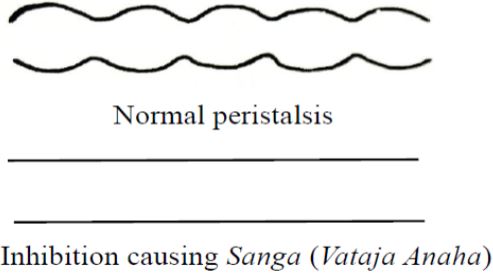Understanding Srotas in Ayurveda: A scientific evaluation of Khavaigunya
DOI:
https://doi.org/10.21760/jaims.10.6.39Keywords:
Ayurveda, Srotas, Khavaigunya, Atipravriti, Sanga, Siragranthi, Vimarg-gamanAbstract
Purpose: Ayurveda integrates various fundamental concepts, with Srotas playing a crucial role in comprehending the Purush Sharir (human body). Srotas is defined as the macro and micro-channels active within a living being, it provides insights into anatomy and physiology in Ayurvedic literature. This study aims to evaluate the various types of Khavaigunya (pathological conditions) in Srotas using a scientific approach, enhancing the understanding of Ayurvedic concepts within modern healthcare frameworks.
Methods: A systematic review of traditional Ayurvedic texts and contemporary research on Srotas was conducted. The study categorizes Khavaigunya into four manifestations: Atipravriti (excess flow), Sanga (obstruction), Siragranthi (nodular formation), and Vimarg-gaman (misdirection of flow). Each category is analyzed for its pathophysiological implications and relevance to modern medicine.
Results: The evaluation reveals that Srotas function as an inner transport system, facilitating interactions among vital bio-factors such as Tridosha, Sapta Dhatu, Oja, and Agni. Disease manifestation due to aetio-pathological factors lead to vitiation of Dosha and Dushya, culminating in Khavaigunya. Understanding these disruptions enables healthcare professionals to assess organic or pathological damage to Srotas.
Conclusion: The integration of Srotas within Ayurvedic practice provides valuable insights into the diagnosis and treatment of various health conditions. A scientific approach to understanding Khavaigunya enhances the ability of healthcare professionals to formulate effective treatment plans, ultimately improving patient outcomes in Ayurvedic medicine.
Downloads
References
Gaud B, editor. Charaka Samhita (Composed by Maharshi Agnivesh and revised by Caraka and Dridhabala). Vol. 1. Vimanasthana, 5/23. New Delhi: Rashtreeya Ayurveda Vidyapeetha; 2021. p. 458.
Gaud B, editor. Charaka Samhita (Composed by Maharshi Agnivesh and revised by Caraka and Dridhabala). Vol. 1. Sutrasthana, 30/12. New Delhi: Rashtreeya Ayurveda Vidyapeetha; 2021. p. 521.
Gaud B, editor. Charaka Samhita (Composed by Maharshi Agnivesh and revised by Caraka and Dridhabala). Vol. 1. Sutrasthana, 30/12. New Delhi: Rashtreeya Ayurveda Vidyapeetha; 2021. p. 521.
Gaud B, editor. Charaka Samhita (Composed by Maharshi Agnivesh and revised by Caraka and Dridhabala). Vol. 1. Sutrasthana, 30/12. New Delhi: Rashtreeya Ayurveda Vidyapeetha; 2021. p. 521.
Gaud B, editor. Charaka Samhita (Composed by Maharshi Agnivesh and revised by Caraka and Dridhabala). Vol. 1. Vimanasthana, 5/25. New Delhi: Rashtreeya Ayurveda Vidyapeetha; 2021. p. 459.
Trikamaji AY, editor. Sushruta Samhita. Sharirasthana, 7/6. New Delhi: Chaukhambha Publications; 2018. p. 453.
Upadhyay Y. Astanga Hridaya. Sharirasthana, 3/40. 14th ed. Varanasi: Chaukhambha Sanskruta Samsthan; Commentary by Kaviraj Atridev Gupta (Vidyotini); p. 171.
Gaud B, editor. Charaka Samhita (Composed by Maharshi Agnivesh and revised by Caraka and Dridhabala). Vol. 1. Vimanasthana, 5/6. New Delhi: Rashtreeya Ayurveda Vidyapeetha; 2021. p. 412.
Srinivasulu M. Rogi Pariksha. Chapter 4. Varanasi: Chaukhambha Sanskrit Pratishtahan; 2022. p. 94.















